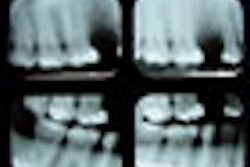Among patients undergoing chemoradiation for head and neck cancer, performing targeted swallowing exercises following chemoradiation is associated with short-term improvement in swallowing function, according to a report in the Archives of Otolaryngology -- Head & Neck Surgery.
However, there were no significant differences in swallowing function between the intervention group and controls at nine or 12 months following treatment, according to the study authors, from Mount Sinai Medical Center (Arch Otolaryngol Head Neck Surg, April 2012, Vol.138:4, pp. 376-382).
"With improvements in swallowing function from post-treatment exercises, interest in the use of prophylactic swallowing exercises to prevent or minimize post-CRT swallowing dysfunction has grown," they wrote. "Indeed, some cancer treatment centers recommend prophylactic swallowing exercises for all their patients undergoing CRT."
Tamar Kotz, MS, and colleagues conducted a randomized controlled trial of 26 patients with head and neck cancer who were receiving chemoradiation. Half of the patients were randomized to the intervention group; they performed five targeted swallowing exercises throughout their therapy and participated in weekly swallowing therapy sessions.
The other half of patients were randomized to the control group, where they received no swallowing exercises and were referred for swallowing treatment after completion of chemoradiation if indicated.
The authors found that there were no statistically significant differences in swallowing scores between the intervention group and control group immediately following CRT. Additionally, there were no statistically significant differences in eating in public subscale scores between patients in the intervention group and those in the control group.
However, patients in the intervention group showed significantly better scores on both scales at three and six months following treatment. At nine and 12 months following treatment, however, scores on both scales between the intervention group and the control group were no longer significant. According to the authors, this could be due to the small sample size of the study.
Continued study with a larger sample size is needed to expand on these findings and provide a more powerful analysis of the effect of prophylactic swallowing exercises on patients with head and neck cancer treated with chemoradiation, the authors conclude.



















